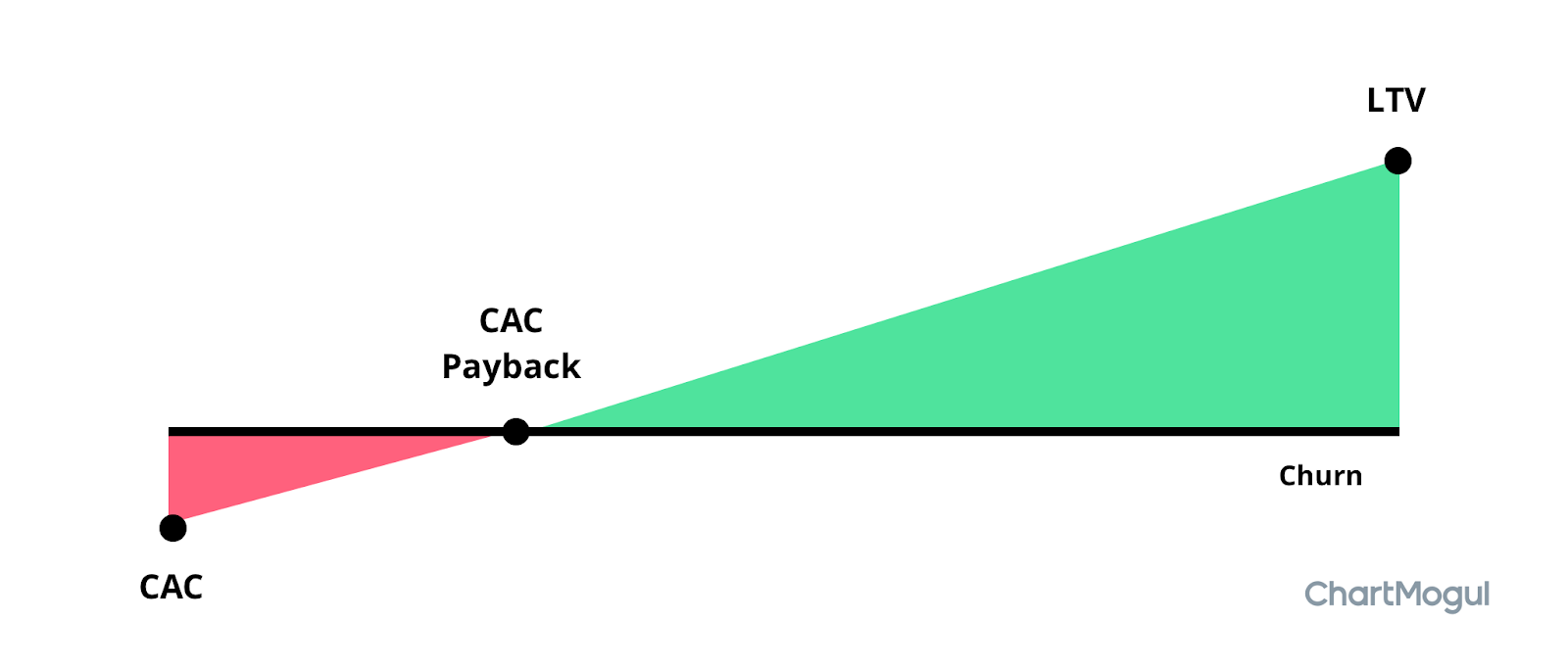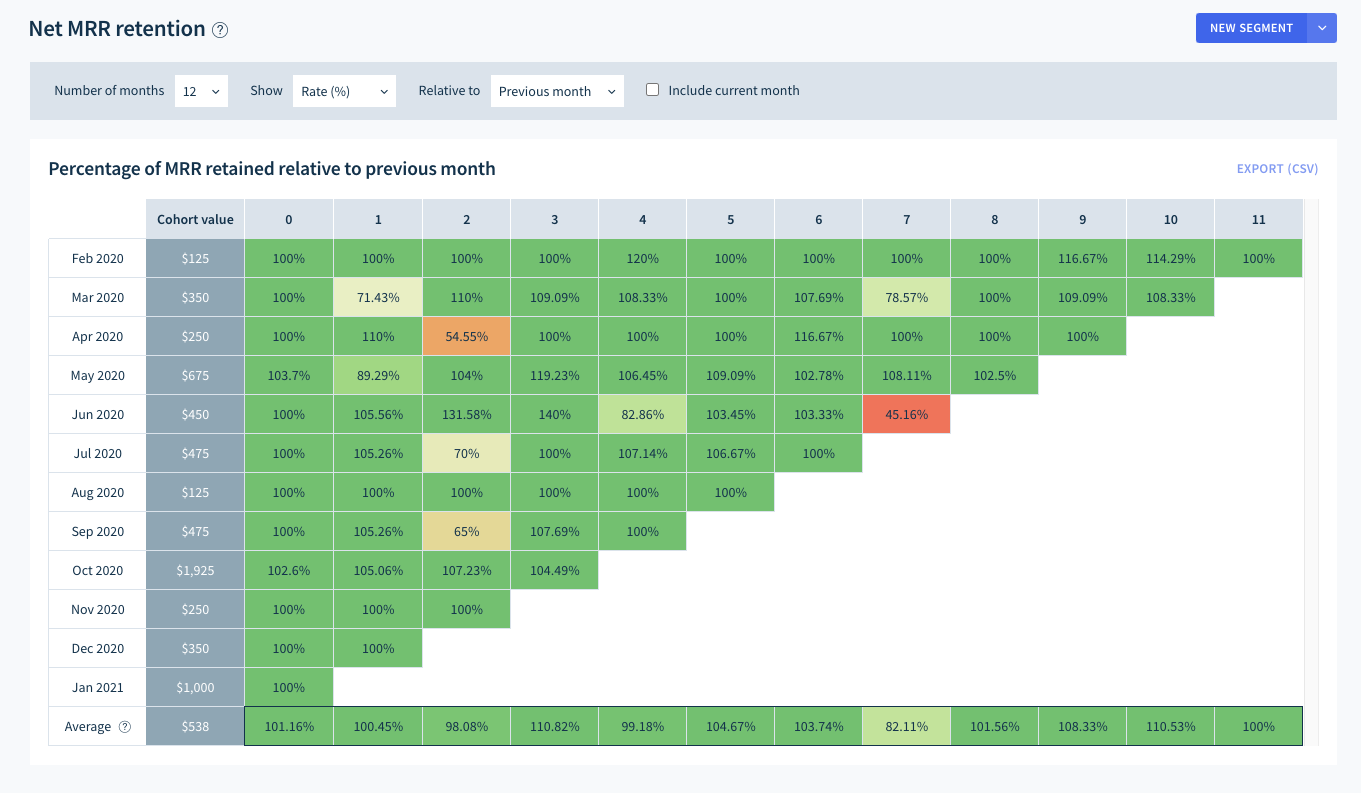Every time I think about how SaaS companies grow, I come back to the idea that:
Growth is the result of engagement, retention, and monetization.
Tweet this quote
But at the same time, retention is also the most crucial factor that drives acquisition and monetization. What that means is that retention plays a role in all three elements of a successful growth engine.
None of this is new to people in SaaS, so why write another article on the topic?
For one thing, there isn’t a single useful resource that collects everything you need to know about it.
Besides, as the industry evolves, so does our thinking about some of its central topics.
We’ll get into some of the current trends about retention further down in this guide, but let’s revisit some of the core questions first.
What is retention?
At its core, retention measures the ability of your business to keep paying customers over time.
If you have poor retention, nothing else matters.
Brian Balfour
It is a question of strategic importance for SaaS companies because of how the subscription model works.

You can have the best acquisition engine in the world, but it can’t save you if your retention is not up to par.
That is why it is vital to understand not just what retention is but how to measure it and how to turn the numbers into insight on how to improve your product.
How do you measure retention?
Similar to churn, we also need to discern between MRR retention and customer retention.
Customer retention rate formula
To find your Customer retention rate you need two numbers — how many customers you had on the first day of a given month and how many of those were still subscribers at the end of the month:
Customers retained during the period (month) / Customers at the beginning of the period
Let’s look at an example to make it easier to comprehend:
The Donald Duck Co. starts the month of March with 20 paying customers. During the month, one customer cancels their plan. This means their Customer Retention Rate for March is (20-1)/20 = 95%.
This is the simplest way to analyze your retention. While it is a quick and straightforward way to calculate a rate, you should be careful about using the core number of customers to measure retention.
Measuring retention by revenue yields more meaningful results.
MRR retention rate formula
There’s a simple formula to measure your MRR retention rate, and it is very similar to the one we use to measure churn:
(Gross) MRR Retention = Revenue retained during the current period (month) / Revenue at the beginning of the period
We’re using the same example from above, and it should help you understand how MRR retention is different from looking at customers:
The Donald Duck Co. starts the month of March with $100 in MRR. During the month, one customer cancels their $10/mo premium plan. This means their Gross MRR retention for March is (100-10)/100 = 90%.
In our example, we’re assuming a small number of customers who are mostly paying the same monthly subscription. But in reality, companies tend to face much more variability. Losing one customer might not seem like a big deal — unless that customer accounts for a significant proportion of your revenue. That’s why we advocate for looking at MRR retention rates.
On a separate note, keep in mind that our calculation does not include any new customers gained during the month. Hopefully, it should be obvious why — we’re interested in retention, not all revenue/business.
More importantly, it doesn’t include any expansion revenue from those who became customers before the beginning of March and upgraded or bought an add-on during the month.
That is because we’re looking at Gross MRR Retention. Another way to look at this is to measure Net MRR Retention, which includes expansion from your existing customer base:
In addition to the customer who canceled, in March Donald Duck also had 3 customers switch from the $5/mo plan to the more expensive $10/mo plan. That means their Net MRR retention rate for March is [100-10+(3×5)]/100 = $105/$100 = 105%
One question you can often see around the discussion of retention and churn is whether you should be looking at the gross or net numbers.
Our answer is that you should be looking at both. They tell you different things.
Think about it this way — the gross retention number tells you how well you’re solving the problem customers came with to you in the first place.
Your net retention, on the other hand, indicates whether the value of your product and your pricing are aligned with the success of your customers.
Cohort analysis for deep understanding of retention
Looking at one simple retention rate number does not tell you much about the performance of your company.
Cohort analysis provides a much more detailed view and allows you to gain insight that you can turn into concrete actions aimed at improving your retention rates.

When we talk about cohorts, we simply mean a group of people who share a specific trait. Thus, we can define a cohort as Customers who subscribed in March 2021, or Customers who were closed by (sales rep) Mary, or even Customers who were closed by Mary in March 2021.
A cohort is simply a fancy name for a group.
David Skok
Cohorts based on time periods have become a standard for analyzing retention:
However, they reveal their real power when you combine time cohorts with segmentation. This allows you to understand who are your best customers and what makes them stick.
For a more detailed view on analyzing retention using cohort analysis, check out our resources.
Deep dives:
- Cohort Analysis in the SaaS Metrics Refresher email course
- The Ultimate Cohort Analysis Cheat Sheet
What is a good retention rate?
Benchmarking provides the best answer to this question.
Naturally, retention varies across niches (consumer vs. B2B software) and segments (SMB vs. enterprise).
We have collected several benchmarking studies, which should help guide your understanding:
- What is a good retention (Lenny Rachitsky and Casey Winters)
- What’s a Good Net Retention Rate in SaaS? (Jason Lemkin, SaaStr)
On the (rising) importance of net retention
Over the last few years, we’ve seen SaaS become even more competitive.
The emergence of trends such as product-led growth demonstrates how professionals in the industry are trying to find new ways to achieve sustainable success.
All that means that it is even more critical than ever to find ways to align your product with the value you generate for your customers and find the right monetization structure that allows you to grow along with them.
We often see this reflected in the discussion about value metrics and the fixation on (achieving) positive net MRR retention (i.e., growing even without adding new customers).
How can you improve your retention rate?
While retention is notoriously hard to budge, it doesn’t mean there aren’t ways in which you can act on it.
There are multiple ways you can increase the retention rate of your product:

(Also, check out Lenny’s excellent Twitter thread that goes into more detail on each of these.)
We can probably identify even more ways to improve retention, but the truth is that the first two items on this list have the highest potential — improving your product and your onboarding.
Between them, working on your product naturally has a higher chance to deliver more value and improve retention. However, it’s not only costlier and more time-consuming but also challenging to keep delivering more value consistently.
That’s why many startup teams go after their customer onboarding as the lowest hanging fruit that presents the most significant opportunity to improve retention rates.
Deep dive:
Retention lies at the core of every successful subscription business
The SaaS model is simple when stripped of all layers of complexity added by technology, measurement, etc.
At its essence, it is about a promise that your solution will solve a pain that the customer is experiencing.
Your retention rate measures how well you are delivering on that promise.
You can apply multiple marketing and business tactics to acquire a customer — on a free trial or a freemium plan — but retention is the definitive proof that you are delivering on the promise you attracted them with.
